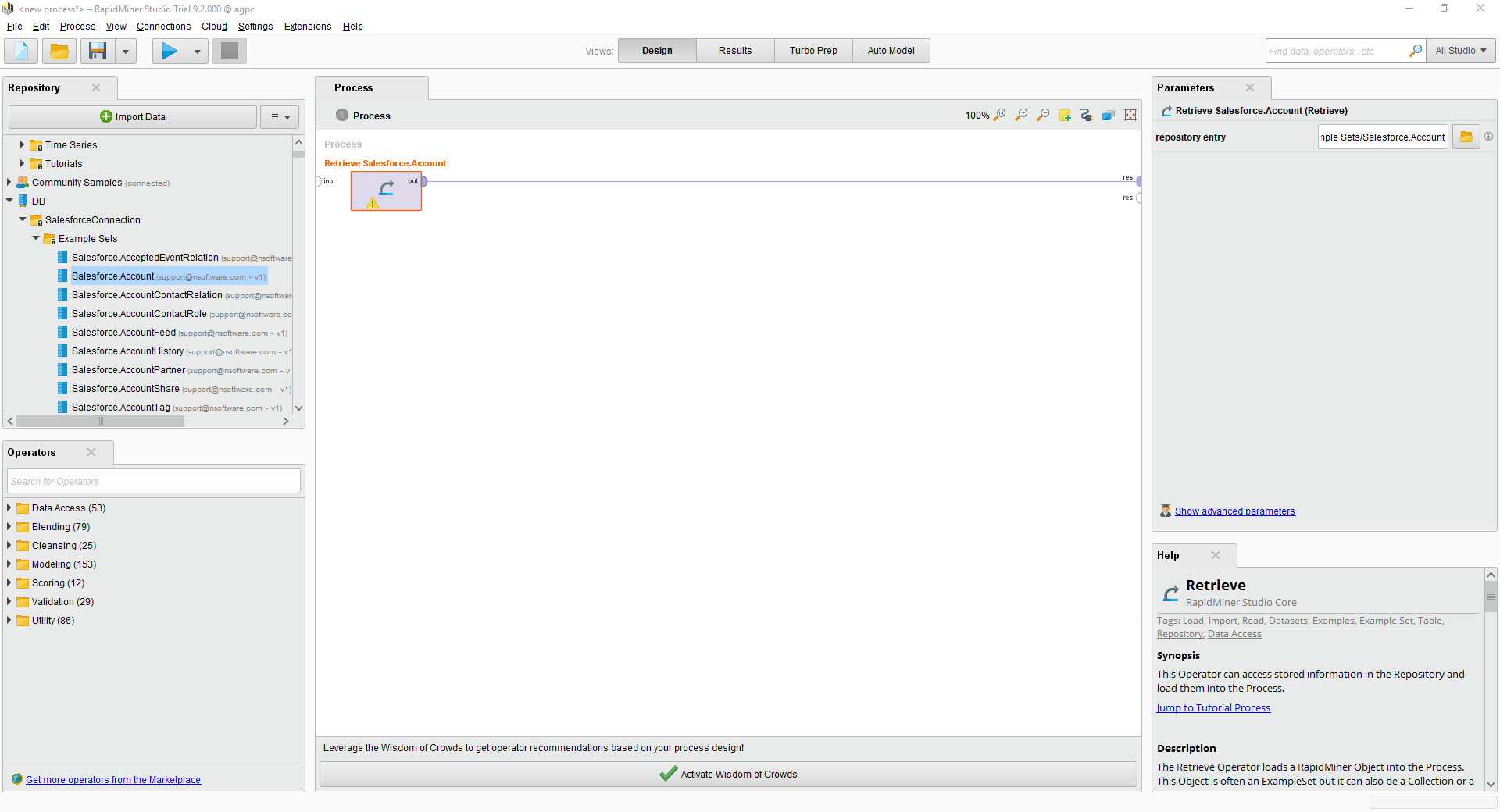Discover how a bimodal integration strategy can address the major data management challenges facing your organization today.
Get the Report →Connect to MongoDB Data in RapidMiner
Integrate MongoDB data with standard components and data source configuration wizards in RapidMiner Studio.
This article shows how you can easily integrate the CData JDBC driver for MongoDB into your processes in RapidMiner. This article uses the CData JDBC Driver for MongoDB to transfer MongoDB data to a process in RapidMiner.
Connect to MongoDB in RapidMiner as a JDBC Data Source
You can follow the procedure below to establish a JDBC connection to MongoDB:
- Add a new database driver for MongoDB: Click Connections -> Manage Database Drivers.
- In the resulting wizard, click the Add button and enter a name for the connection.
- Enter the prefix for the JDBC URL:
jdbc:mongodb: - Enter the path to the cdata.jdbc.mongodb.jar file, located in the lib subfolder of the installation directory.
- Enter the driver class:
cdata.jdbc.mongodb.MongoDBDriver![The JDBC driver configuration. (Salesforce is shown.)]()
- Create a new MongoDB connection: Click Connections -> Manage Database Connections.
- Enter a name for your connection.
- For Database System, select the MongoDB driver you configured previously.
- Enter your connection string in the Host box.
Set the Server, Database, User, and Password connection properties to connect to MongoDB. To access MongoDB collections as tables you can use automatic schema discovery or write your own schema definitions. Schemas are defined in .rsd files, which have a simple format. You can also execute free-form queries that are not tied to the schema.
Built-in Connection String Designer
For assistance in constructing the JDBC URL, use the connection string designer built into the MongoDB JDBC Driver. Either double-click the JAR file or execute the jar file from the command-line.
java -jar cdata.jdbc.mongodb.jarFill in the connection properties and copy the connection string to the clipboard.
![Using the built-in connection string designer to generate a JDBC URL (Salesforce is shown.)]()
A typical connection string is below:
Server=MyServer;Port=27017;Database=test;User=test;Password=Password; - Enter your username and password if necessary.
![The connection to the JDBC data source. (Salesforce is shown.)]()
You can now use your MongoDB connection with the various RapidMiner operators in your process. To retrieve MongoDB data, drag the Retrieve operator from the Operators view.
 With the Retrieve operator selected, you can then define which table to retrieve in the Parameters view by clicking the folder icon next to the "repository entry." In the resulting Repository Browser, you can expand your connection node to select the desired example set.
With the Retrieve operator selected, you can then define which table to retrieve in the Parameters view by clicking the folder icon next to the "repository entry." In the resulting Repository Browser, you can expand your connection node to select the desired example set.

Finally, wire the output to the Retrieve process to a result, and run the process to see the MongoDB data.










